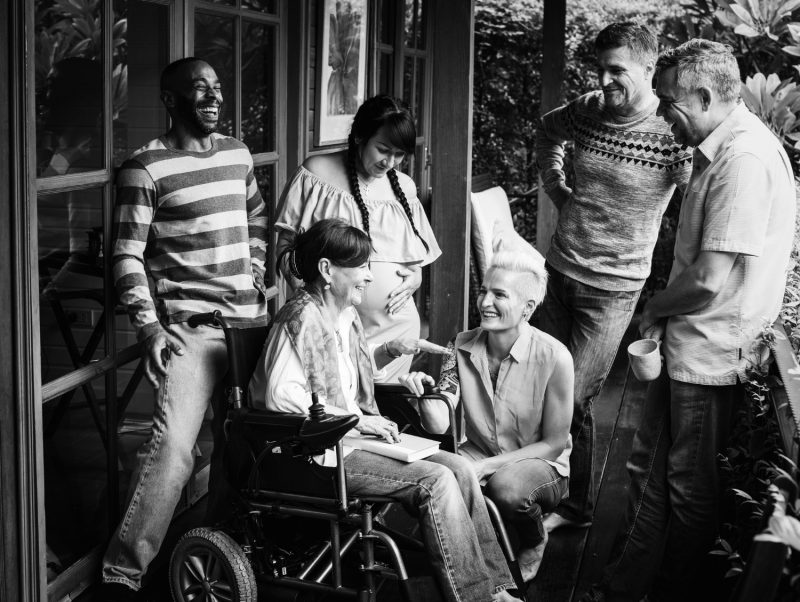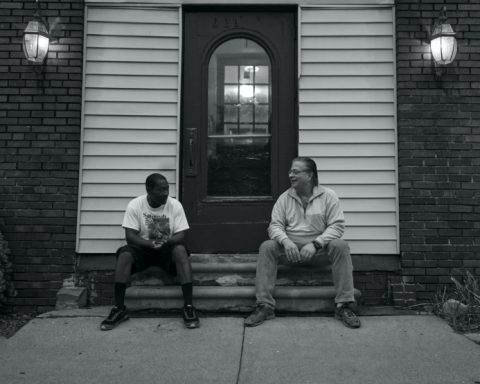In the fast-paced tapestry of modern life, the threads that traditionally held tight-knit communities together are crumbling at the ends. Your neighborhoods, once thriving sites of interaction, now reverberate with a distinct feeling of separation. The fast-paced nature of modern life has resulted in isolated communities. Disconnected towns and neighborhoods have become the norm, leaving individuals isolated in the very places they call home.
The pulse of close-knit communities, which was once the heartbeat of thriving neighborhoods, has decreased over time. It’s a challenge that many people recognize yet frequently struggle to solve. As you move on with this issue, visualize a world in which housing communities are more than just clusters of apartment buildings and houses but thriving ecosystems fostering community relationships and well-being.
This article sets out to investigate the necessity of adopting community living as a cure-all for the ills plaguing our social structure. Moreover, it will also draw attention to the necessity of a paradigm change by working through these problems and prioritizing a healthy community environment.
Communities in the modern world
The construct of community has experienced a significant metamorphosis in the modern, complicated world. People residing in close physical proximity to each other yet retaining emotional distance is a phenomenon facilitated by the fast urbanization and busy lifestyle of major metropolitan areas.
Pioneering data available has revealed the stark reality of isolated communities that are common in large cities, emphasizing how common it is for neighbors to live next to each other without engaging in meaningful conversation. Moreover, statistics clarify the concerning figures of residential regions that struggle with a lack of community cohesiveness.
The complex web of neighborhood links is tearing apart during the rush of modern life, leaving a landscape of stressed communal ties. Understanding the significance of communities in the modern world is essential to developing tactics that will promote connection and revitalize the sense of community.
The need for healthy communities
Promoting healthy communities is necessary in the pursuit of societal peace. Literature continues to highlight the various advantages that result from the creation and upkeep of solid social ties. The prominent benefits that can be listed are as follows:
Enhanced social support systems
Healthy communities lead to stronger support systems. A sense of connection and belonging is created by living in tight-knit communities. Strong connections create mental and emotional resilience by serving as a safety net in difficult circumstances.
People feel supported and understood in an environment where a sense of community acts as a buffer against the stresses of modern life.
The belief is that people who have a strong sense of community can better defend themselves from the stresses and strains of modern life. People deal with a variety of pressures in today’s fast-paced and frequently demanding society, including social expectations, work pressure, and personal duties.
A supportive community serves as a buffer by offering practical, social, and emotional assistance. People can discuss their burdens, ask for help, and receive empathy in this space created by their sense of belonging, which also promotes a sense of security and understanding.
Improved mental and physical health
The well-being of a community’s citizens is strongly influenced by how healthy and thriving the community is. It has been observed time and time again that residents in communities with significant social connections had reduced levels of stress, anxiety, and depression.
Moreover, the beneficial effects also extend to physical health since societies with strong community relationships have been found to have fewer chronic illness cases.
Increased safety and security
An often overlooked aspect of flourishing neighborhoods is increased safety and security. Crime is discouraged by the mutual trust and sense of community that thrives in cohesive areas. There is also a greater likelihood of residents working together on crime prevention projects, which makes the streets safer and everyone feels more secure.
Keys to creating healthy communities in residential living
Building a flourishing residential community depends on fundamental concepts promoting connection, collaboration, and a sense of shared space. Investigate the relevance of building connections through community events, cultivating collaboration through shared responsibilities, and creating common areas that encourage contact.
Forge connections through community events
Shared experiences serve as the weave and weft of community living, and community gatherings serve a key purpose for this. These events offer priceless chances for people to interact personally, developing friendships and a feeling of community.
Community activities allow residents to venture outside of their respective worlds and participate in collective experiences. Organizing inclusive events like block parties, neighborhood clean-up days, and cultural festivities can help to break down social boundaries and weave a sense of togetherness.
To organize community events, speak to your local homeowners association about the proper procedures. Or you can even just invite your neighbors to a barbecue in your backyard.
Nurture collaboration through shared obligations and efforts
The idea of collaborative responsibility is the bedrock of a flourishing residential community. When neighbors band together to confront mutual concerns or launch joint activities, a sense of commonality emerges. Collaborative activities not only improve the physical landscape but also create social bonds among neighbors.
Starting a community garden is a great way to encourage people to work together and share resources. Another idea is to hold a monthly “Street Swap” or a neighborhood fitness competition. It could be beneficial to support one another in maintaining an active and healthy community.
Design common areas for interaction
A resident society’s physical layout has a significant impact on its social dynamics. Well-designed common areas serve as catalysts for interaction, allowing neighbors to come together naturally. These facilities allow for both spontaneous and scheduled interactions. Residential communities can foster a sense of belonging and relationships by consciously developing places that stimulate socialization and collaboration.
Read more: Weaving Unity: Essential Tips for Cultivating Community Belongingness
You may turn your patio or rooftop into a social area. Add picnic tables, hammocks, and benches to make it a pleasant and inviting space for neighbors to relax, have a meal, or just spend time outside. Make a welcoming common room that is equipped with cozy chairs, board games, and a coffee area. This will make it the ideal place for unplanned get-togethers and informal discussions.
Forge human relationships in residential blocks
Creating relationships in affordable residential communities requires building strong community relationships.
Saying hi to your neighbors or planning informal get-togethers like game evenings or potluck dinners are practical steps you can take. Establishing open channels of communication is also essential.
This can be done by hosting frequent social events or using a shared digital platform to allow locals to express their worries and suggestions. Bonds can be strengthened, and a sense of community can be created by doing small deeds like planting a communal garden or offering assistance to a neighbor in need.
Nurture cultural diversity
A commitment to a new way of thinking about community living is the first step on the journey towards healthier residential communities. Accepting this means figuring out how to live in your neighborhood’s complex cultural contexts.
To promote inclusivity, residents are urged to value the diversity of backgrounds.
For example, you can have a neighborhood potluck where each person brings a dish from their home culture, celebrates variety, and promotes neighborly understanding and communication. Attend community activities that highlight diverse cultures or practices and demonstrate sincere interest and respect.
Ultimately, all of it is for the assurance that communal living becomes a cooperative and enjoyable experience and contributes to a thriving residential environment.
In conclusion
By working together and sharing a common goal of bringing residential communities back to life, residents can strengthen their bonds and create a vibrant social fabric that benefits everyone.
These encourage dialogue, cooperative endeavors, and a common sense of accountability, creating a resilient fabric that fortifies the social relationships found in residential communities.
A healthy community is built on the combined efforts of its residents. From strengthening social support systems to reaping the rewards of improved mental and physical health, the benefits of a connected community are numerous.
You and the community should work together to create a tapestry of interconnectedness in which each member is more than just a resident but also an essential component of a thriving community.
If you would like to see more resources on community or neighbors, check out the Household Management Science Labs. The lab uses the research of the Institute for Life Management Science to produce courses, certifications, podcasts, videos, and other tools. Visit the Household Management Science Labs today.
Photo by rawpixel.com on Freepik



